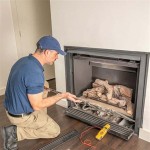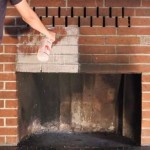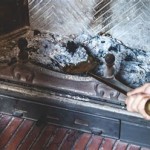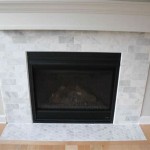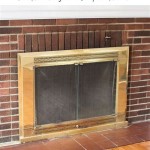Table Top Ethanol Fireplace Reviews: A Comprehensive Guide
Table top ethanol fireplaces have gained significant popularity in recent years as a stylish and convenient alternative to traditional wood-burning or gas fireplaces. They offer the ambiance of a real flame without the need for chimneys, vents, or complex installations. These portable fireplaces use readily available liquid ethanol fuel, making them an attractive option for apartments, condos, or homes where traditional fireplaces are not feasible or desired. This article provides a comprehensive review of table top ethanol fireplaces, exploring their key features, benefits, drawbacks, and factors to consider when selecting the right model.
Understanding the functionality of a table top ethanol fireplace is crucial for assessing its suitability. These devices consist primarily of a burner unit, typically made of stainless steel, housed within a decorative enclosure. The enclosure can be crafted from various materials, including glass, metal, stone, or a combination thereof. The burner holds the liquid ethanol fuel, which is ignited to produce a clean-burning flame. The flame height and intensity can often be adjusted using a sliding damper or a similar mechanism located on the burner unit. The simplicity of the design contributes to the ease of use and maintenance of these fireplaces.
Key Point 1: Assessing Safety Features and Compliance
Safety is paramount when considering any open-flame device, and table top ethanol fireplaces are no exception. It is imperative to select models that incorporate multiple safety features to mitigate potential risks. Look for fireplaces with a sturdy and stable base to prevent accidental tipping. Many models include spill-proof designs that minimize the risk of fuel leakage if the unit is inadvertently knocked over. A flame snuffer or extinguishing tool is an essential accessory to safely extinguish the flame without direct contact. Furthermore, it is prudent to choose fireplaces that comply with relevant safety standards and certifications, such as those issued by recognized testing organizations like UL or CSA. These certifications indicate that the fireplace has undergone rigorous testing to ensure it meets established safety requirements.
The choice of materials also plays a role in safety. The enclosure should be constructed from heat-resistant materials that can withstand the high temperatures generated by the flame. Tempered glass is a common choice for its durability and resistance to shattering. Metal components should be made of stainless steel or other corrosion-resistant alloys to prevent degradation over time. Opting for a fireplace with a double-walled construction can help to reduce the surface temperature of the enclosure, minimizing the risk of burns upon contact.
Proper ventilation is also a critical safety consideration. While ethanol fireplaces produce minimal smoke and fumes compared to wood-burning fireplaces, they still consume oxygen and release carbon dioxide. It is important to operate the fireplace in a well-ventilated area to prevent the buildup of carbon dioxide, which can lead to headaches, dizziness, or even more serious health problems. Avoid using ethanol fireplaces in enclosed or poorly ventilated spaces, such as small bedrooms or bathrooms.
Finally, responsible fuel handling is essential for safe operation. Always store ethanol fuel in a cool, dry place away from heat sources and open flames. Never refill the burner while the flame is still burning or the unit is still hot. Allow the fireplace to cool completely before adding more fuel. Use only high-quality denatured ethanol fuel specifically designed for use in ethanol fireplaces. Avoid using other types of alcohol or flammable liquids, as they may produce harmful fumes or pose a fire hazard.
Key Point 2: Evaluating Design Aesthetics and Functionality
Table top ethanol fireplaces are available in a wide range of designs, from sleek and modern to rustic and traditional. When selecting a fireplace, consider the overall aesthetic of your space and choose a model that complements your existing décor. Glass enclosures offer a clear view of the flame and can create a contemporary look. Metal enclosures provide a more industrial or minimalist feel. Stone enclosures can add a touch of natural elegance. The size and shape of the fireplace should also be appropriate for the intended use. A small, compact fireplace may be suitable for a coffee table or mantelpiece, while a larger model may be better suited for a dining table or outdoor patio.
Functionality is another important consideration. Look for fireplaces with adjustable flame height controls, which allow you to customize the ambiance and heat output. Some models feature rotating or pivoting flame guards that can be used to direct the heat and protect nearby surfaces. Consider the ease of filling and refilling the fuel reservoir. Some fireplaces have removable burners that can be easily filled, while others require the use of a funnel. The burn time, or the amount of time the fireplace can operate on a single fill, can also vary depending on the model and fuel capacity. Choose a fireplace with a burn time that meets your needs.
The quality of the materials and construction is essential for long-term durability and performance. Opt for fireplaces made from high-quality materials that can withstand the rigors of regular use. Pay attention to the details, such as the smoothness of the edges, the alignment of the components, and the overall fit and finish. A well-constructed fireplace will not only look better but will also be more reliable and safe to operate.
Consider the ease of cleaning and maintenance. Ethanol fireplaces require minimal maintenance, but it is important to periodically clean the enclosure and burner to remove any soot or residue. Choose a fireplace with a design that allows for easy access to the burner and other components. Use a soft cloth and mild detergent to clean the enclosure. Avoid using abrasive cleaners or solvents, as they may damage the finish.
Key Point 3: Analyzing Performance and Heat Output
The performance of a table top ethanol fireplace is measured by its heat output, burn time, and flame quality. While these fireplaces are primarily designed for ambiance, they can also provide a small amount of supplemental heat. The heat output is typically measured in British thermal units (BTUs). A higher BTU rating indicates a greater amount of heat. However, it is important to note that table top ethanol fireplaces are not intended to be a primary source of heat. They are best suited for creating a cozy and inviting atmosphere in a small to medium-sized room.
Burn time is another important performance metric. The burn time depends on the size of the fuel reservoir and the flame height setting. A larger fuel reservoir will generally provide a longer burn time. Lowering the flame height will also extend the burn time. Choose a fireplace with a burn time that meets your needs and preferences. Consider how often you plan to use the fireplace and how long you want it to operate on a single fill.
The quality of the flame is also a key factor in the overall performance of the fireplace. A good ethanol fireplace will produce a clean, bright, and steady flame. The flame should not flicker excessively or produce excessive smoke or soot. The flame should also be easy to ignite and extinguish. Read reviews from other users to get an idea of the flame quality of different models.
The type of fuel used can also affect the performance of the fireplace. Always use high-quality denatured ethanol fuel specifically designed for use in ethanol fireplaces. Avoid using other types of alcohol or flammable liquids, as they may produce harmful fumes or pose a fire hazard. Follow the manufacturer's instructions for filling and refilling the fuel reservoir. Overfilling the reservoir can cause the fuel to spill, which can be dangerous. Underfilling the reservoir can cause the flame to burn unevenly or extinguish prematurely.
When assessing heat output, remember that the primary purpose of these fireplaces is aesthetic. Expect a subtle warming effect suitable for a small area rather than significant room heating. Factors like room size, insulation, and ambient temperature will influence the perceived warmth.
The cost of operation, including the price of ethanol fuel, should also be factored into the overall assessment. Compare the cost per hour of different fuels and fireplace models to determine the most economical option. While ethanol fuel is generally more expensive than wood or gas, the convenience and portability of table top ethanol fireplaces can make them a worthwhile investment for many users.
In conclusion, selecting the right table top ethanol fireplace involves careful consideration of safety features, design aesthetics, functionality, and performance. By thoroughly evaluating these factors, consumers can make informed decisions and choose a fireplace that provides both warmth and ambiance to their living spaces.

Best Ethanol Fireplace Review Choose The Right For You Soothing Company

What Is The Largest Ethanol Fireplace For Your Room Modern Blaze

Rectangle Tabletop Bioethanol Fireplace Vonhaus

Outdoor Tabletop Fireplaces Get The Perfect Small Fireplace

Vonhaus Tabletop Fireplace Bioethanol Bio Ethanol Table Top Fire Heater For Outdoor Indoor Portable 70 Min Burn Time Windproof Glass Rectangle Shape Hammer Stone Grey

Vonhaus Bio Ethanol Tabletop Fireplace Bioethanol Fire Pit For Outdoor And Indoor Portable 60 Min Burn Time Windproof Glass Diy At B Q

Stonhome Tabletop Fire Pit Bowl Marble Portable Fireplace Indoor Outdoor Mini Clean Flame For Patio Balcony Smores Maker

Kante 7 2 In X Bio Ethanol Fireplace The Gel Fireplaces Department At Com

Customized Smokeless Bio Ethanol Tabletop Fireplace Suppliers Good Inno Living

Pop 8l Low Ethanol Fireplace Outdoor Living Essentials
Related Posts

